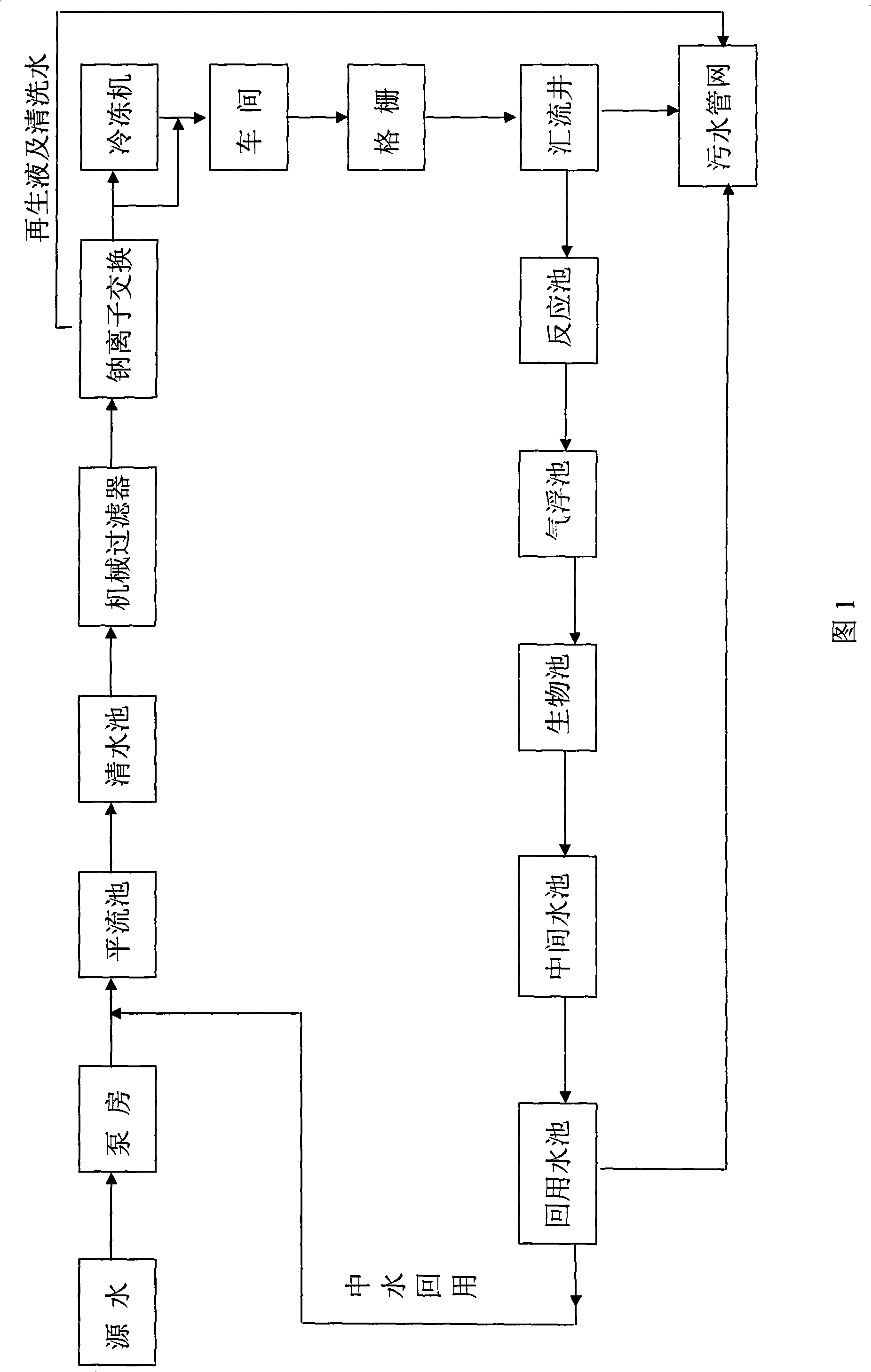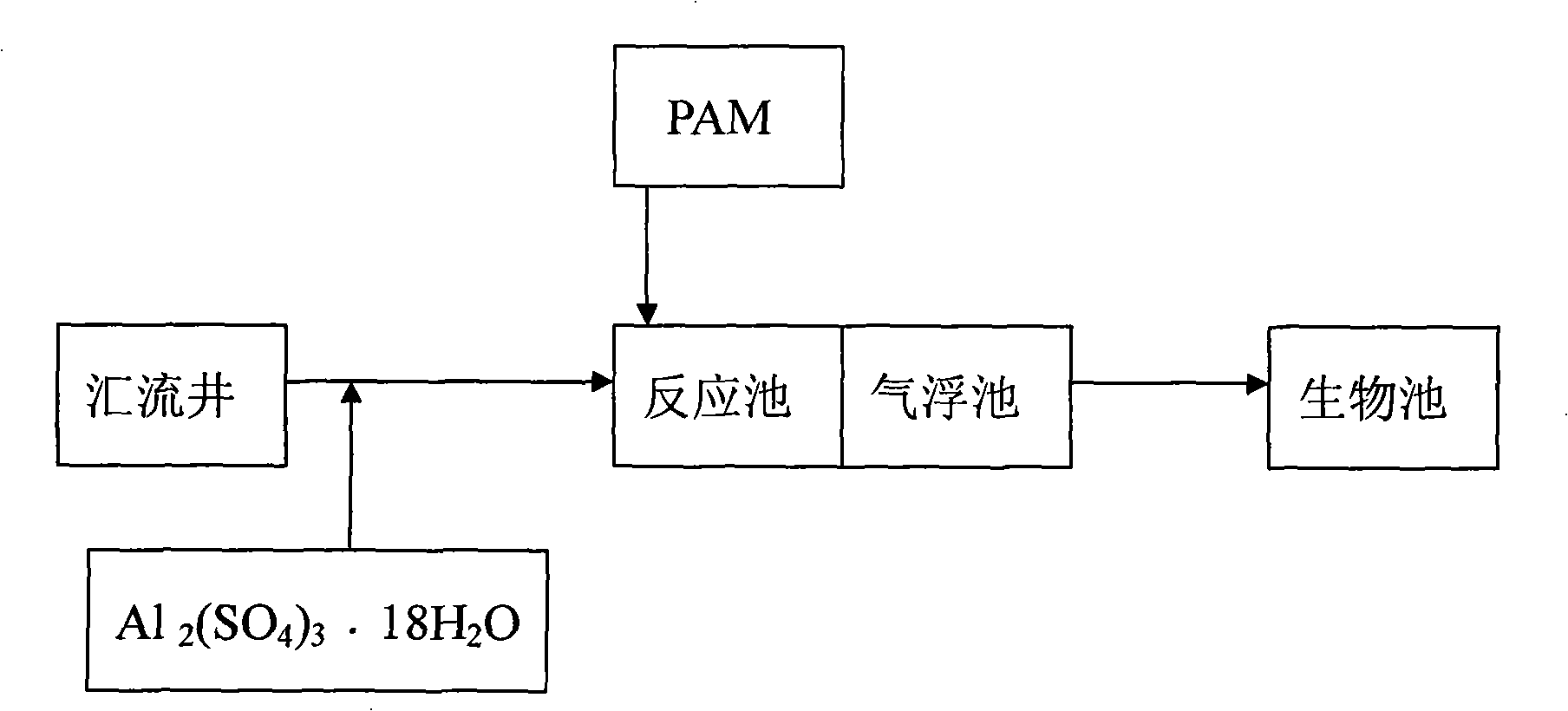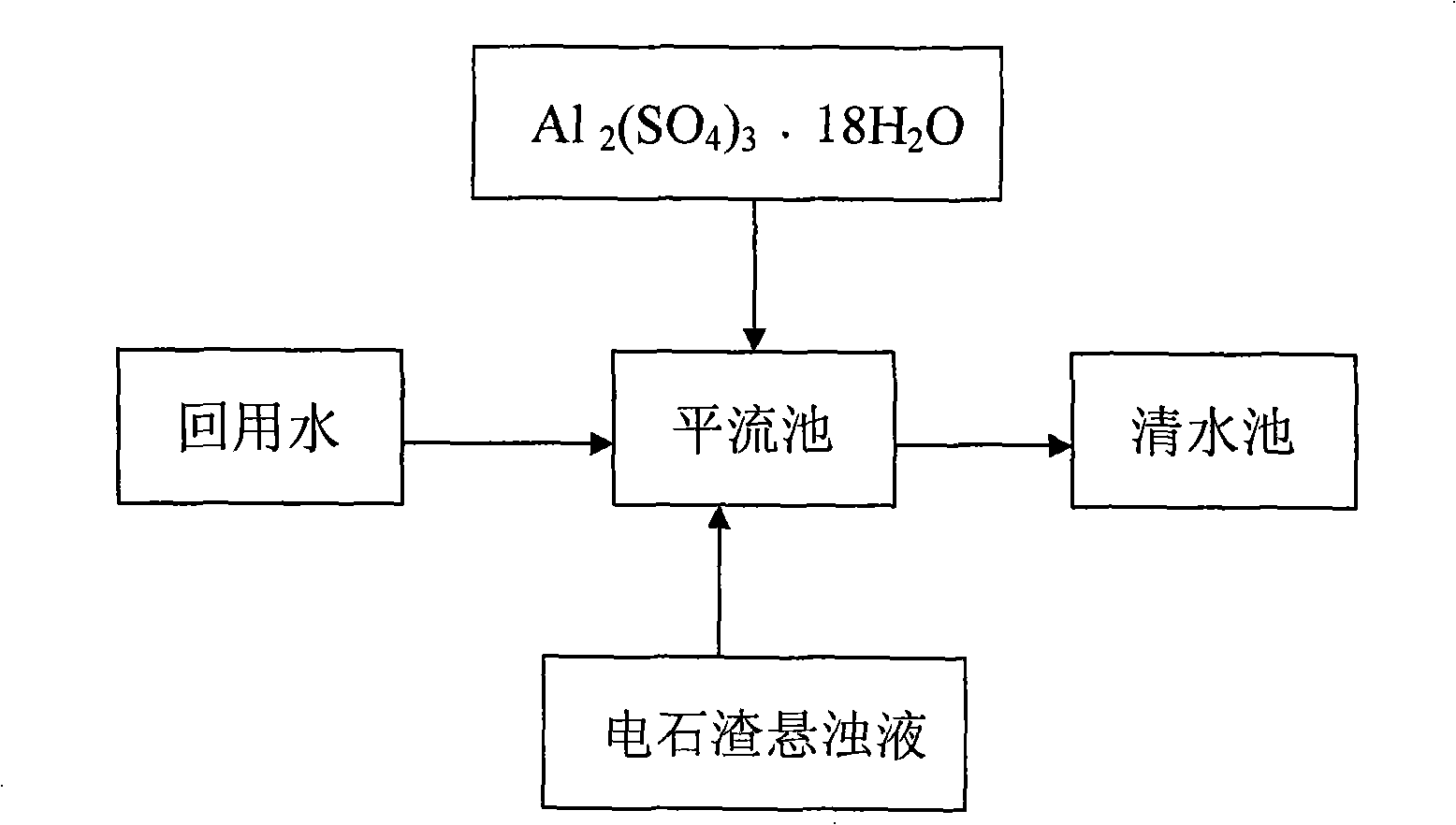Reclaiming treatment method for hydraulic loom waste water
A wastewater treatment and water-jet loom technology, which is applied in the textile industry wastewater treatment, flotation water/sewage treatment, water/sewage multi-stage treatment, etc., can solve the problems of low textile wastewater reuse rate and improve mutual contact Opportunity, Response Effect Obvious Effect
- Summary
- Abstract
- Description
- Claims
- Application Information
AI Technical Summary
Problems solved by technology
Method used
Image
Examples
Embodiment 1
[0030] Referring to Figure 1, after the water jet loom wastewater is regulated, it is lifted to the reaction tank by the lift pump, where it is treated with dosing coagulation and pressurized dissolved air flotation. The wastewater coagulation dosing is 9.5~10% PAC, and the dosage is 0.3~0.35‰ of the wastewater volume. Air flotation pool. In the air flotation tank, chemical slurry such as PVA, surfactants and oils in the wastewater are removed, the separated sludge enters the sludge thickening tank, and the remaining part enters the biological tank for treatment. After coagulation reaction + pressurized dissolved air flotation, the effluent COD removal rate is over 75%, the turbidity removal rate is over 85%, Cl -The concentration increases by about 10%. Biological treatment is carried out on the remaining organic matter in the wastewater in the biological tank. After the sedimentation mud water is separated, the sludge enters the sludge concentration tank, the effluent ente...
Embodiment 2
[0034] The determination of the concentration and dosage of main medicaments is shown in the following groups:
[0035] Table 2-1 The relationship between the concentration and dosage of chemicals and water quality
[0036] Group
do not
Aluminum sulfate
concentration
Aluminum sulfate
dosage
PAM
concentration
PAM
dosage
COD
remove
remove
pH
Reduced amount
2.1
6.0%
0.5‰
1.0‰
0.20‰
85%
75%
3
2.2
6.5%
0.4‰
1.5‰
0.16‰
85%
80%
2
2.3
7.0%
0.3‰
2.0‰
0.12‰
85%
85%
1.5
2.4
7.5%
0.2‰
2.5‰
0.08‰
85%
98%
1
2.5
8.0%
0.15‰
3.0‰
0.04‰
80%
97%
0.8
2.6
8.5%
0.10‰
3.5‰
0.04‰
74%
70%
0.6
2.7 ...
Embodiment 3
[0042] The determination of the concentration and dosage of main medicaments is shown in the following groups:
[0043] Table 3-1 The relationship between the concentration and dosage of chemicals and water quality
[0044] group
Aluminum sulfate concentration
Aluminum sulfate dosage
Turbidity removal
pH
3.1
6.0%
0.5‰
1.0%
3‰
50%
7.3
3.2
6.5%
0.4‰
1.5%
2‰
50%
7.2
3.3
7.0%
0.3‰
1.5%
1‰
50%
7.0
3.4
7.5%
0.2‰
2.0%
0.8‰
55%
7.5
3.5
8.0%
0.15‰
2.5%
0.3‰
50%
7.1
3.6
8.5%
0.10‰
3.0%
0.1‰
40%
6.8
3.7
9.0%
0.10‰
4.0%
0.05‰
45%
6.6
[0045] Referring to Figure 1, image 3 , the advect...
PUM
 Login to View More
Login to View More Abstract
Description
Claims
Application Information
 Login to View More
Login to View More - R&D
- Intellectual Property
- Life Sciences
- Materials
- Tech Scout
- Unparalleled Data Quality
- Higher Quality Content
- 60% Fewer Hallucinations
Browse by: Latest US Patents, China's latest patents, Technical Efficacy Thesaurus, Application Domain, Technology Topic, Popular Technical Reports.
© 2025 PatSnap. All rights reserved.Legal|Privacy policy|Modern Slavery Act Transparency Statement|Sitemap|About US| Contact US: help@patsnap.com



